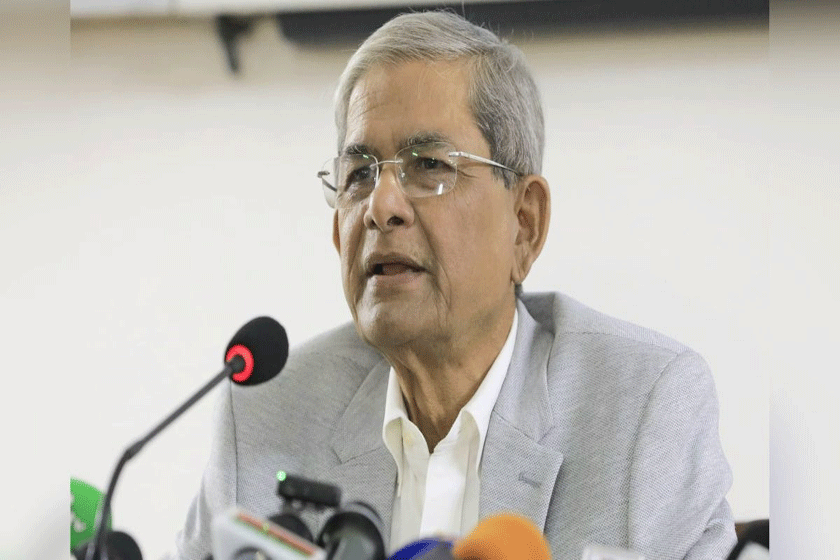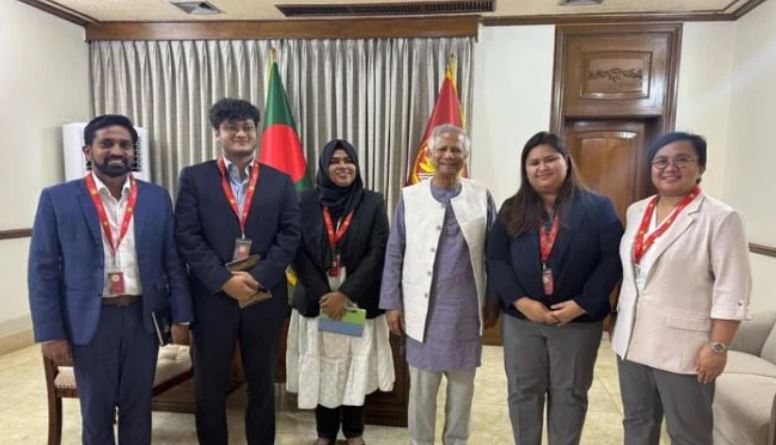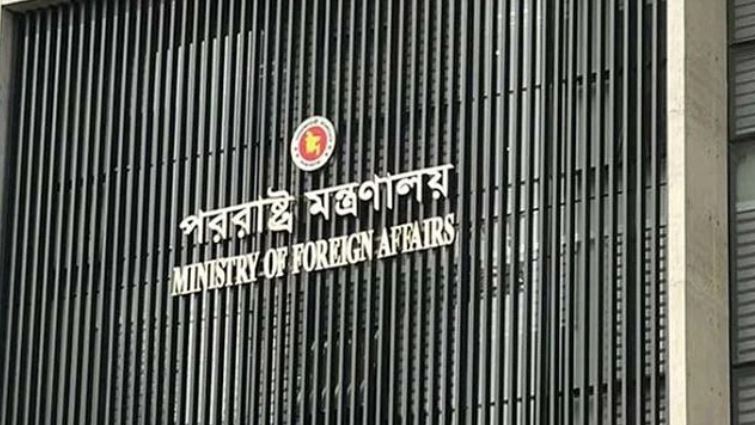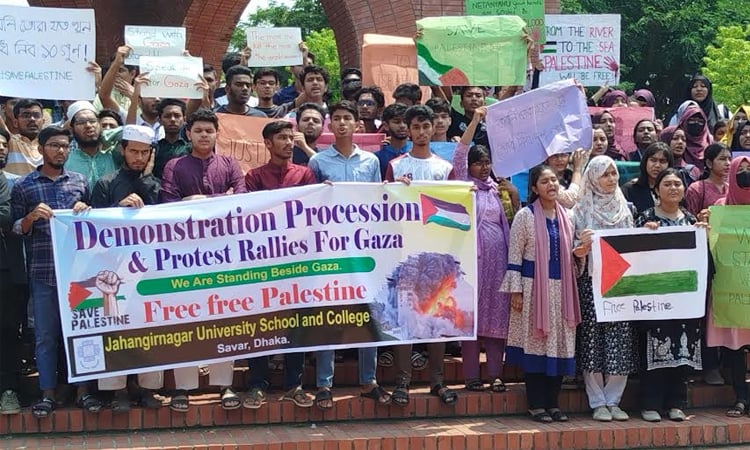
Bangladesh has made remarkable progress in the last 20 years in improving the lives of women and girls. Maternal mortality rates are falling, the fertility rate is declining, and there is greater gender parity in school enrolment.
But the scenario is not always in favour of the female community of the society. Likewise, in other parts of the world, women in Bangladesh also are lagging behind in many areas.
Against this backdrop, likewise across the globe, International Women's Day is being celebrated in Bangladesh today with the call for removing all inequality and creating an environment where the female community can contribute more to society and their rights are materialized.
The theme for this year's International Women's Day is: "Women in leadership: Achieving an equal future in a COVID-19 world."
Celebrated on March 8 every year, this day is symbolic of the historic journey women around the world have taken to better their lives. It comes as a reminder that while a lot has been achieved, the journey is long and a lot more needs to be done.
In a message, the United Nations Development Programme (UNDP) said: "This year’s International Women’s Day is like no other. As countries and communities start to slowly recover from a devastating pandemic, we have the chance to finally end the exclusion and marginalization of women and girls. But to do that, we need immediate action. Women must have the opportunity to play a full role in shaping the pivotal decisions being made right now as countries respond to and recover from the COVID-19 pandemic – choices that will affect the wellbeing of people and the planet for generations to come."
To do this, we must break down the deep-seated historic, cultural, and socio-economic barriers that prevent women from taking their seat at the decision-making table to make sure that resources and power are more equitably distributed. For instance, across the world, women remain concentrated in the lowest-paid jobs, many in extremely vulnerable forms of employment. Women are nearly twice as likely as men to lose their jobs during the COVID-19 crisis. Indeed, the pandemic will dramatically increase the poverty rate for women and widen the gap between men and women who live in poverty.
Despite the barriers, women, especially young women, are at the forefront of diverse and inclusive movements for social change -- online and in the streets. That includes their leading role in taking a stand against climate change, fighting for a green economy and pushing for women’s rights. And we know that more inclusive leadership and representation leads to stronger democracies, better governance, and more peaceful societies. Look, for instance, to research by UN Women, which demonstrates that involving women in peace processes is likely to make peace agreements last much longer.
This year’s International Women’s Day is a rallying cry for Generation Equality. It is time to finally fully harness the power of women’s leadership to realise a more equal, more inclusive and more sustainable future, it added.
International Women’s Day has been celebrated for over a century now. But while many people think of it as a feminist cause, its roots lie in the labour movement. It was first organised in 1911 by Germany Clara Zetkin who was born in 1857 in Germany’s Wiederau.
In Bangladesh, despite the fact that women have been able to make their footsteps in a leading position in the government and politics, legislation, judiciary, administration, businesses, professions, a majority portion of female members of the society in Bangladesh still suffering various obstacles, oppression and deprivation.
Their participation in decision making is ignored, and safety and security instil far way to be ensured. About 82 percent of women suffer gender-based violence and pervasive sexual violence prevents women from achieving their full potentials. Despite efforts by the government and non-governmental organisations to reduce the rate of child marriage in Bangladesh, it remains the highest in South Asia at 59 percent of girls getting married before the age of 18.
Women’s participation in the workforce remains constrained to limited, low-paying sectors. Three million Bangladeshi women are employed in the lucrative ready-made garment sector but are given low wages compared to their male colleagues.
Though women's involvement is growing in small and medium enterprises, there remains a large finance gap that women face despite several government initiatives. In Bangladesh, few women entrepreneurs and retailers sell farming tools and products.
Access to finance by women entrepreneurs in the micro, cottage and small and medium enterprises (CMSME) is very insignificant and not to easy to get access by them. Despite the success of microfinance in helping improve poor women’s access to finance, many women in rural Bangladesh are still required to take out high-interest loans through informal money lenders to earn a living and care for their families. More women in Bangladesh now have access to low-interest loans that help them be more resilient and independent.
In the families, female members still lack proper nutrition resulting in putting them in a state where they are vulnerable to malnutrition. 36 percent of children under the age of five are stunted and 33 percent are underweight. In addition, 31 percent of women and girls aged 15 to 19 are undernourished.
The government's sustained policy support, especially the national policy strategies have helped ensure women’s advancement. Bangladesh’s achievements in the past decade have been exemplary in many sectors such as in reducing infant and child mortality, poverty alleviation, increase in women entrepreneurship, education, and health.
Executive Director of the Centre for Policy Dialogue (CPD) Dr Fahmida Khatun recently mentioned that Bangladesh is improving in the area of women’s empowerment – but to ensure sustainability, more emphasis should be given in skills development, higher education, technology-based education, and capacity building.
“A large number of women were employed in the RMG sector but now it’s decreasing. Most of the women are employed in the informal sector – which is 85 percent and are low-income jobs. Through technology-based education, they aim for getting jobs in high-income industries,” said Dr Fahmida Khatun.
In 2018, Prime Minister Sheikh Hasina was honoured with the Global Women’s Leadership Award for her outstanding leadership for the advancement in women’s education and women entrepreneurship in Bangladesh and in the Asia Pacific region.
Earlier in 2016, UN Women also awarded Sheikh Hasina with “Planet 50-50 Champion” while Global Partnership Forum handed over the “Agent of Change Award” for her role in women’s empowerment.
Back in 2014, she was awarded “WIP Global Forum Award” from Women in Parliament (WIP) and UNESCO for her leading role in reducing the gender gap in the political sphere in South and South-East Asia. She also received the “Tree of Peace” Award for promoting girls’ and women’s education in the same year.
To attain the goals initiated by the Bangladesh government for women’s development, the country has approved the highest allocation in history for the sector in the budget for the 2018-19 fiscal year. Bangladesh considers women’s participation as a vital issue in the path of women’s empowerment as one of the main drivers of transforming the country’s status from low-income to middle-income.
Women’s advancement through access to education, health, labour market, employment, and social protection have been prioritized, in the FY19 budget which is around 30% of the total budget size.
The government also has allocated Tk 100 crore for Women Entrepreneurship Fund and Tk 25 crore for Women Development Special Fund in FY19.
Women still lag behind men in terms of participation in politics as almost all registered political parties are set to miss their target of ensuring 33 per cent representation of women in their committees by 2020. Women’s participation in indirect elections to parliament and local government bodies are also poor.












0 Comments